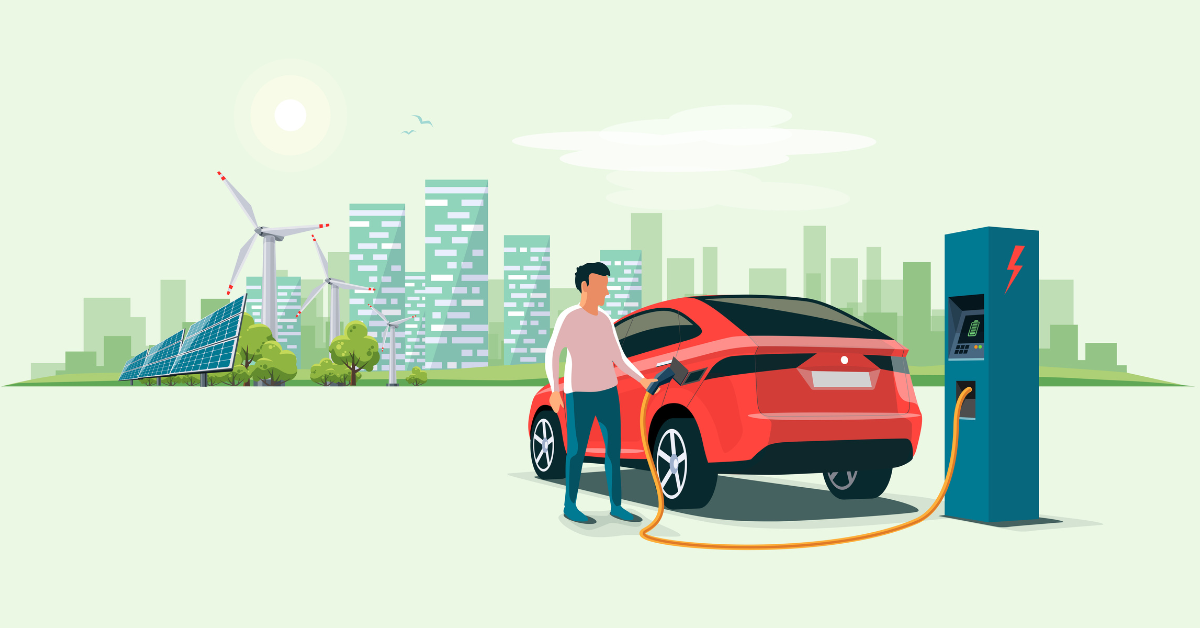This year’s budget was critical for the EV industry — a battery swapping policy was implemented and higher standards for the development of India’s EV ecosystem were set
Battery swapping infrastructure will allow EV owners to swap out discharged batteries for charged ones at various swapping stations
The benefits of battery swapping infrastructure can only be realised if industry leaders help to establish an ecosystem that focuses on consumer needs, safety, and convenience
This year’s budget was critical for the electric vehicle (EV) industry. The government implemented a battery swapping policy and established higher standards for the development of India’s EV ecosystem.
These policies aim to address one of the most significant barriers to EV adoption: charging infrastructure. They reduce upfront costs and downtime, resulting in faster adoption of EVs in the Indian market. Battery swapping will need to take into account accountability for EV safety, customer experience, and EV manufacturers’ business interests to serve as a tech solution.
Battery Swapping Policy Is The Need Of The Hour
Battery swapping infrastructure will allow EV owners to swap out discharged batteries for charged ones at various swapping stations. This solves the problem of installing charging stations while also reducing drivers’ concerns about the range of their EVs. Battery leasing through the battery swapping infrastructure will help EV owners save money on battery purchases. This takes only a few minutes compared to charging at a battery station, and it also requires less infrastructure.
Superior battery swapping infrastructure also contributes to lowering the upfront cost of the vehicle for the consumer, resulting in a halving of the vehicle’s price. The risk of technological obsolescence is eliminated, and safety is ensured. Users now have a larger portfolio of models to choose from that suit their style and needs.
With this comes a subscription-based model that allows consumers to choose the best technology available at the best price, similar to how a user chooses a service provider in terms of connectivity and can switch based on the quality of service provided.
The superior battery swapping infrastructure also allows for access to finance through asset sharing among users, battery service providers, and original equipment manufacturers (OEMs).
The Question Of Standardisation
Today, the electric vehicle industry is almost non-existent and highly fragmented. In the Indian market, consumer behaviour and conditions differ in both behavioural and operational terms, such as driving. As a result, EVs will fail unless extensive local testing and learning are conducted per this infrastructure.
With the battery-swapping market scenario, EV manufacturers and stakeholders should facilitate the phased development of a swapping ecosystem and its infrastructure that is linked to the stage of maturity of the EV market. The battery policy should take a targeted approach, always identifying priority vehicle segments, and enable the rapid adoption of EV battery swapping solutions in those segments where battery swapping plays the most valuable role.
The policy for battery swapping should strike a balance between standardisation and encouraging innovation in swapping infrastructure. This should also provide opportunities for equitable growth for various technologies, solutions, and business models. The policy must give various stakeholders, such as manufacturers, industry players, and state governments, the flexibility they need to develop battery-swapping ecosystem development strategies that are best suited to meet the needs of this sector.
The approach to standardisation should always include determining which aspects can and cannot be standardised. Standardisation has the potential to transform battery swapping from a business-to-business (B2B) activity to a business-to-consumer (B2C) transaction. This also leads to ease of use and access, as well as a variety of options for an EV user. The standardisation of EVs is a lengthy process that requires agreement among various battery and vehicle manufacturers.
The superior battery swapping infrastructure will not only boost normal users’ confidence in moving faster and adopting EVs, but it will also address range anxiety. It will also help to strengthen the country’s EV ecosystem and bring about a standardisation process for EV batteries.
The government is also addressing key issues such as how customers can access current EV subsidies, range per charge criteria, and GST for swapping services in line with EVs. In addition, the government is taking several encouraging steps toward interoperability standards.
The charging and swapping stations for the battery swapping infrastructure will be located separately. The swapping policy should always encourage states to develop various rules and guidelines for safe battery transportation. The proposed policy will also aid in the establishment of a single-window clearance system, which will include the issuance of trade licenses.
The infrastructure for battery swapping should provide clarity on the status of battery swapping as a delicensed activity. If a trade license is required, the policy should identify and process the issuing authority.
A Positive Step But More Needs To Be Done
A key component of the GoI’s COP 26 goals is the decarbonisation of the power sector, which entails using ToD and renewable energy to charge batteries at various swapping stations. This is made possible by having a battery swapping infrastructure. Additionally, it lessens the nation’s reliance on the import of oil and battery raw materials.
As compared to ICEs (Internal Combustion Engines), today’s financing options for electric vehicles are simple to construct. A few examples include electric vehicle ownership being financed at half the cost (without the battery), minimal technology risk, and negligible maintenance. Electric vehicle batteries are handled by well-known and well-funded OEMs and CPOs. Battery swapping with mini modules (2-4 battery swap packs) will become available at various stores as technology advances.
In a country like India, battery swapping infrastructure can help evolve as a suitable use case for two and three-wheelers, which account for more than 80% of total vehicles. A battery-swapping infrastructure that is both enabling and powerful is critical to accelerating India’s e-mobility transition.
The battery swapping policy should take into account the nascent nature of India’s battery-swapping ecosystem and avoid constraining various aspects of the value chain. The major benefits of battery swapping infrastructure can only be realised if industry leaders help to establish an ecosystem and infrastructure that focuses on consumer needs, safety, and convenience.








![Read more about the article [Funding alert] Hiration raises Rs 21 Cr led by Prime Venture Partners, Venture Highway, and Y Combinator](https://blog.digitalsevaa.com/wp-content/uploads/2021/08/Hiration-43-1629360035131-300x150.png)

